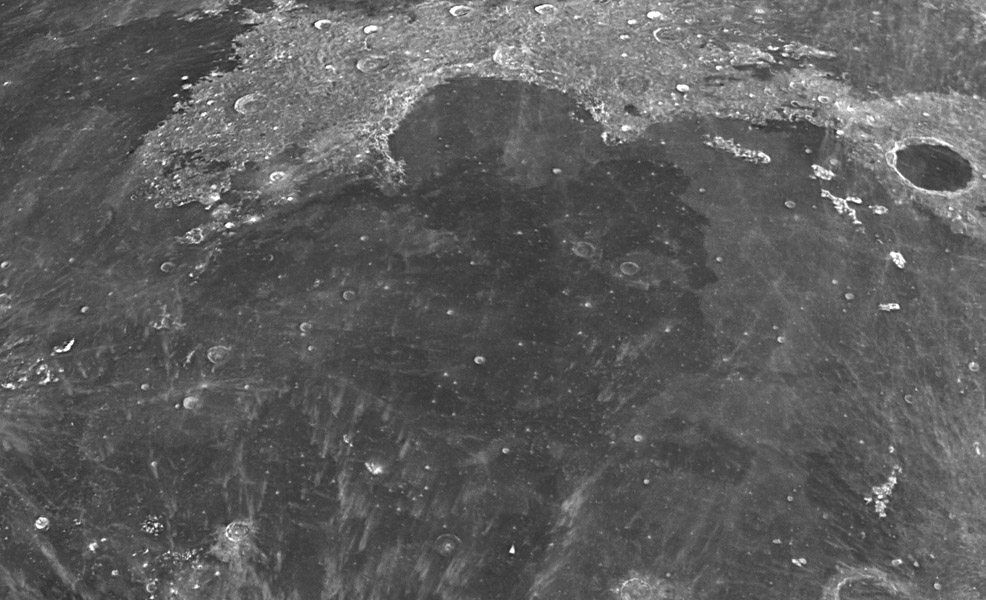Difference between revisions of "September 19, 2008"
| Line 1: | Line 1: | ||
__NOTOC__ | __NOTOC__ | ||
=Bright Mapping= | =Bright Mapping= | ||
| + | <!-- Start of content --> | ||
<!-- ws:start:WikiTextHeadingRule:1:<h1> --> | <!-- ws:start:WikiTextHeadingRule:1:<h1> --> | ||
<!-- ws:start:WikiTextLocalImageRule:7:<img src="/file/view/LPOD-Sep19-08.jpg/38823390/LPOD-Sep19-08.jpg" alt="" title="" /> -->[[File:LPOD-Sep19-08.jpg|LPOD-Sep19-08.jpg]]<!-- ws:end:WikiTextLocalImageRule:7 --><br /> | <!-- ws:start:WikiTextLocalImageRule:7:<img src="/file/view/LPOD-Sep19-08.jpg/38823390/LPOD-Sep19-08.jpg" alt="" title="" /> -->[[File:LPOD-Sep19-08.jpg|LPOD-Sep19-08.jpg]]<!-- ws:end:WikiTextLocalImageRule:7 --><br /> | ||
| Line 18: | Line 19: | ||
<p><b>Tomorrow's LPOD:</b> [[September 20, 2008|A Visit To Copernicus?]] </p> | <p><b>Tomorrow's LPOD:</b> [[September 20, 2008|A Visit To Copernicus?]] </p> | ||
<hr /> | <hr /> | ||
| + | {{wiki/ArticleFooter}} | ||
Latest revision as of 20:24, 7 February 2015
Bright Mapping

image by Bart Declercq
Many opportunities to observe are lost because amateurs look elsewhere near full Moon. Bart has made a magnificent moderate resolution mosaic of the entire nearly full Moon, demonstrating a complexity of patterns of lightness and darkness, and many shades in between. The excerpt here shows that the surface of Mare Imbrium has two major hues - a lighter gray seen in the eastern half and a sharply defined darker portion covering parts of the central-western region. The darker mare is younger and possesses the best preserved lava flow fronts on the Moon. Mare Imbrium is more subtly marked by different patterns of crater rays. Those from Copernicus (off the image beyond the bottom edge) are bright, wide splashes with wispy ends to the north. Aristarchus rays (far left) are shorter, thinner and grayer, while those from Aristillus (off the bottom right edge) are long, thin and less conspicuous, possibly because they are on the bright mare background. And did you notice that C. Herschel is a dark halo crater? I called this a moderate resolution image because it was made at the f/10 prime focus and has 23 million pixels; most LPOD images are larger scale and show smaller features. Bart promises to make a future f/16 mosaic that will have 64 million pixels, and will require well over a hundred AVIs. The only complete collection of telescopic images with high resolution and high Sun is Part II of the Consolidated Lunar Atlas, and the resolution is about the same as Bart's present f/10 image. At f/16 the bright Moon awaits mapping.
Chuck Wood
Technical Details
Sept 14, 2008. Celestron C9.25 in prime focus (F/10 = 2350mm) with DMK31 camera and infrared filter. 43 separate 1000 frame AVI's, up to 35 alignment points per AVI and 128 best images per point.
Related Links
Rükl plate: I don't know, I have unpacked my Rükl yet!
Yesterday's LPOD: Overlooked
Tomorrow's LPOD: A Visit To Copernicus?
COMMENTS?
Register, Log in, and join in the comments.



